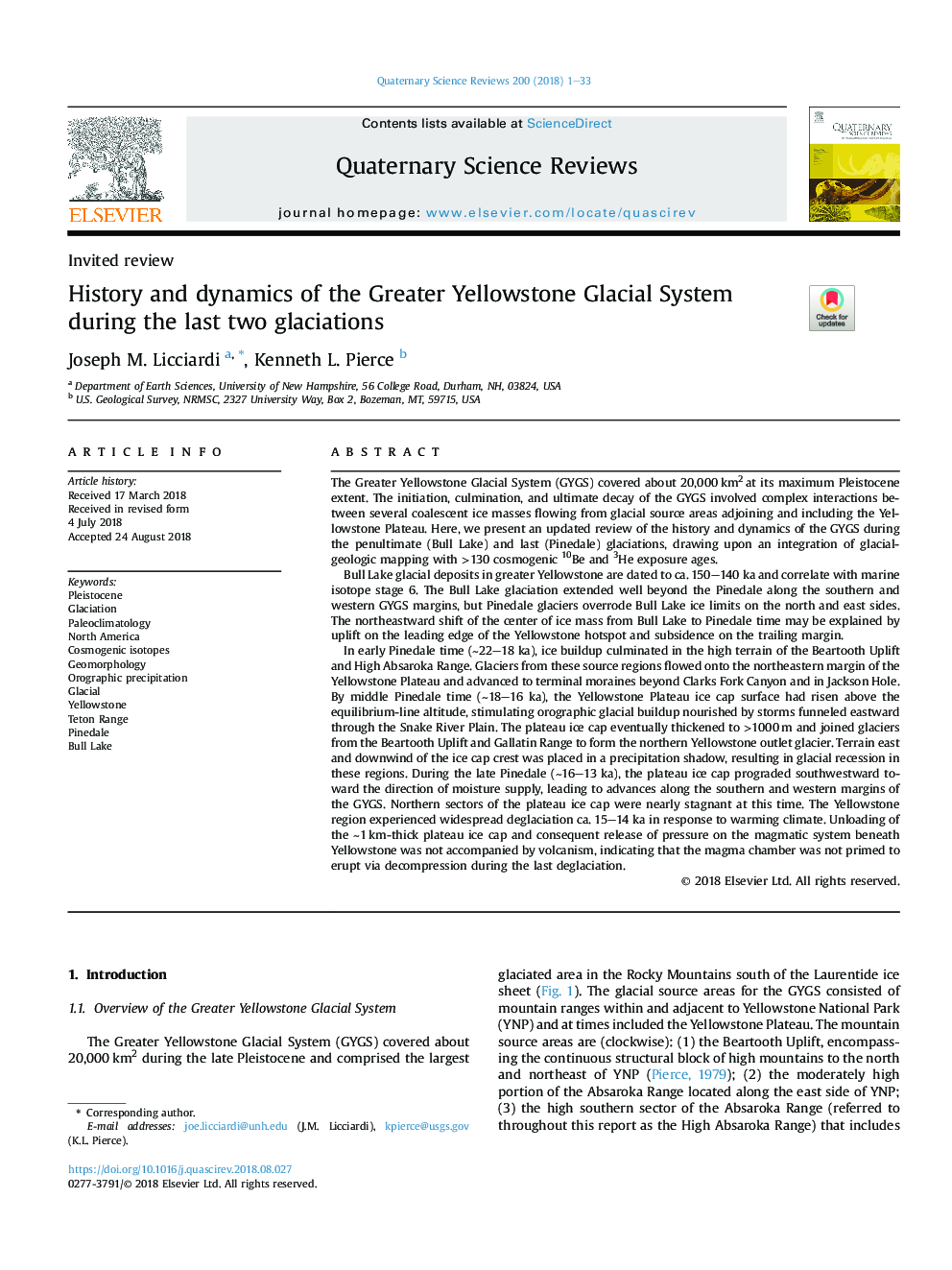| Article ID | Journal | Published Year | Pages | File Type |
|---|---|---|---|---|
| 11010069 | Quaternary Science Reviews | 2018 | 33 Pages |
Abstract
In early Pinedale time (â¼22-18 ka), ice buildup culminated in the high terrain of the Beartooth Uplift and High Absaroka Range. Glaciers from these source regions flowed onto the northeastern margin of the Yellowstone Plateau and advanced to terminal moraines beyond Clarks Fork Canyon and in Jackson Hole. By middle Pinedale time (â¼18-16 ka), the Yellowstone Plateau ice cap surface had risen above the equilibrium-line altitude, stimulating orographic glacial buildup nourished by storms funneled eastward through the Snake River Plain. The plateau ice cap eventually thickened to >1000â¯m and joined glaciers from the Beartooth Uplift and Gallatin Range to form the northern Yellowstone outlet glacier. Terrain east and downwind of the ice cap crest was placed in a precipitation shadow, resulting in glacial recession in these regions. During the late Pinedale (â¼16-13 ka), the plateau ice cap prograded southwestward toward the direction of moisture supply, leading to advances along the southern and western margins of the GYGS. Northern sectors of the plateau ice cap were nearly stagnant at this time. The Yellowstone region experienced widespread deglaciation ca. 15-14 ka in response to warming climate. Unloading of the â¼1â¯km-thick plateau ice cap and consequent release of pressure on the magmatic system beneath Yellowstone was not accompanied by volcanism, indicating that the magma chamber was not primed to erupt via decompression during the last deglaciation.
Keywords
Related Topics
Physical Sciences and Engineering
Earth and Planetary Sciences
Geology
Authors
Joseph M. Licciardi, Kenneth L. Pierce,
